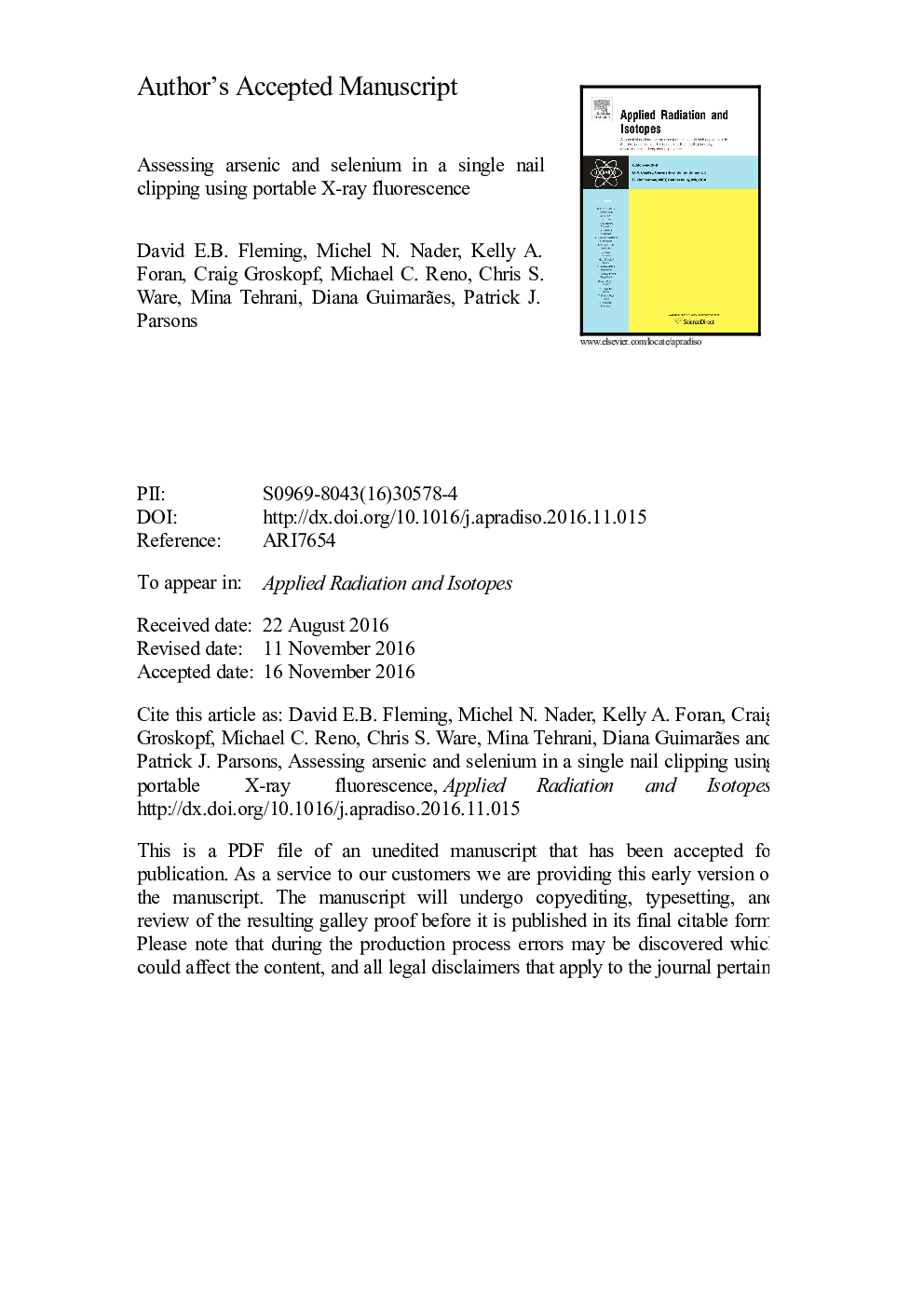| Article ID | Journal | Published Year | Pages | File Type |
|---|---|---|---|---|
| 5497781 | Applied Radiation and Isotopes | 2017 | 22 Pages |
Abstract
The feasibility of measuring arsenic and selenium contents in a single nail clipping was investigated using a small-focus portable X-ray fluorescence (XRF) instrument with monochromatic excitation beams. Nail clipping phantoms supplemented with arsenic and selenium to produce materials with 0, 5, 10, 15, and 20 µg/g were used for calibration purposes. In total, 10 different clippings were analyzed at two different measurement positions. Energy spectra were fit with detection peaks for arsenic Kα, selenium Kα, arsenic Kβ, selenium Kβ, and bromine Kα characteristic X-rays. Data analysis was performed under two distinct conditions of fitting constraint. Calibration lines were established from the amplitude of each of the arsenic and selenium peaks as a function of the elemental contents in the clippings. The slopes of the four calibration lines were consistent between the two conditions of analysis. The calculated minimum detection limit (MDL) of the method, when considering the Kα peak only, ranged from 0.210±0.002 µg/g selenium under one condition of analysis to 0.777±0.009 µg/g selenium under another. Compared with previous portable XRF nail clipping studies, MDLs were substantially improved for both arsenic and selenium. The new measurement technique had the additional benefits of being short in duration (~3 min) and requiring only a single nail clipping. The mass of the individual clipping used did not appear to play a major role in signal strength, but positioning of the clipping is important.
Related Topics
Physical Sciences and Engineering
Physics and Astronomy
Radiation
Authors
David E.B. Fleming, Michel N. Nader, Kelly A. Foran, Craig Groskopf, Michael C. Reno, Chris S. Ware, Mina Tehrani, Diana Guimarães, Patrick J. Parsons,
